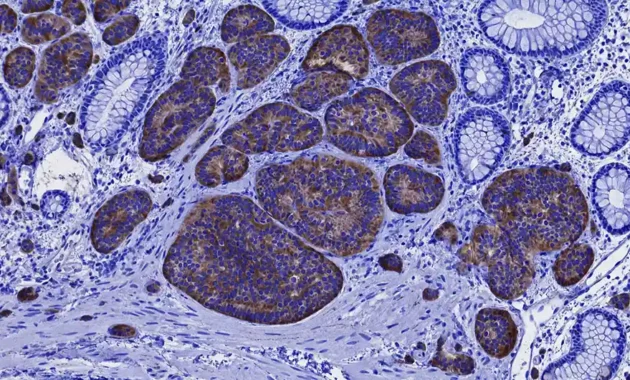Neuroendocrine cancer is a rare and complex disease that affects the neuroendocrine system, a network of cells that produce hormones and regulate various bodily functions. If you or a loved one has been diagnosed with this condition, understanding the medical coding system, particularly the neuroendocrine cancer ICD 10 code, is crucial for accurate diagnosis, treatment, and insurance purposes. In this article, we’ll break down everything you need to know about neuroendocrine cancer, its ICD-10 classification, and why this coding system matters. Let’s dive in!
What is Neuroendocrine Cancer?
Neuroendocrine cancer originates in the neuroendocrine cells, which are found throughout the body, including the lungs, pancreas, intestines, and other organs. These cells act as a bridge between the nervous and endocrine systems, producing hormones that regulate digestion, metabolism, and other vital processes. When these cells become cancerous, they can form tumors that may or may not produce excess hormones, leading to a variety of symptoms.
Diagnosing neuroendocrine cancer can be challenging due to its rarity and the diversity of symptoms it presents. This is where the ICD-10 coding system comes into play. The International Classification of Diseases, 10th Revision (ICD-10), is a globally recognized system used by healthcare providers to classify and code diseases, including cancer. For neuroendocrine cancer, the ICD-10 code ensures accurate documentation, streamlined communication among healthcare professionals, and proper insurance billing.
Why is the ICD-10 Code Important for Neuroendocrine Cancer?
The neuroendocrine cancer ICD 10 code is more than just a series of numbers and letters. It’s a critical tool that helps healthcare providers accurately diagnose, treat, and track the progression of the disease. Without the correct ICD-10 code, patients may face delays in treatment, miscommunication between specialists, or even issues with insurance claims.
For example, if a patient is diagnosed with a neuroendocrine tumor in the pancreas, the specific ICD-10 code allows the oncologist, endocrinologist, and surgeon to all be on the same page regarding the diagnosis. This ensures that the patient receives the most appropriate and timely care. Additionally, the ICD-10 code is essential for cancer registries and research studies, helping scientists better understand the prevalence and behavior of neuroendocrine cancer.
Neuroendocrine Cancer ICD 10 Codes: A Breakdown
The ICD-10 coding system categorizes neuroendocrine cancer based on the location of the tumor and its behavior (benign or malignant). Below is a table that outlines the most common ICD-10 codes for neuroendocrine cancer:
| Tumor Location | ICD-10 Code | Description |
|---|---|---|
| Pancreas | C25.4 | Malignant neuroendocrine tumor of the pancreas |
| Stomach | C16.9 | Malignant neuroendocrine tumor of the stomach, unspecified |
| Small Intestine | C17.0 | Malignant neuroendocrine tumor of the duodenum |
| Appendix | C18.1 | Malignant neuroendocrine tumor of the appendix |
| Lung | C34.90 | Malignant neuroendocrine tumor of the lung, unspecified |
| Rectum | C20 | Malignant neuroendocrine tumor of the rectum |
| Other Specified Sites | C7A.8 | Other malignant neuroendocrine tumors |
| Benign Neuroendocrine Tumors | D3A.8 | Benign neuroendocrine tumors of other specified sites |
This table provides a snapshot of the most commonly used ICD-10 codes for neuroendocrine cancer. However, it’s important to note that the specific code used will depend on the tumor’s location, behavior, and other clinical details.
Symptoms and Diagnosis of Neuroendocrine Cancer
Neuroendocrine cancer is often referred to as a “silent disease” because its symptoms can be vague and easily mistaken for other conditions. Common symptoms include:
- Persistent fatigue
- Unexplained weight loss
- Flushing or redness of the skin
- Diarrhea or abdominal pain
- Wheezing or shortness of breath
If you experience any of these symptoms, it’s essential to consult a healthcare provider. Early diagnosis is key to effective treatment and improved outcomes. Diagnostic tests for neuroendocrine cancer may include blood tests, imaging studies (such as CT scans or MRIs), and biopsies.
Treatment Options for Neuroendocrine Cancer
The treatment plan for neuroendocrine cancer depends on several factors, including the tumor’s location, size, and whether it has spread to other parts of the body. Common treatment options include:
- Surgery: The primary treatment for localized neuroendocrine tumors. Surgery aims to remove the tumor and any affected surrounding tissue.
- Radiation Therapy: Used to target and destroy cancer cells, often in cases where surgery isn’t an option.
- Chemotherapy: Medications that kill cancer cells or stop them from growing.
- Targeted Therapy: Drugs that specifically target cancer cells without harming healthy tissue.
- Hormone Therapy: Used to manage symptoms caused by hormone-producing tumors.
Your healthcare team will work with you to develop a personalized treatment plan based on your unique diagnosis and needs.
Living with Neuroendocrine Cancer: Tips for Patients and Caregivers
A neuroendocrine cancer diagnosis can be overwhelming, but there are steps you can take to manage the disease and maintain your quality of life. Here are some tips:
- Stay Informed: Educate yourself about your diagnosis and treatment options. Knowledge is power!
- Build a Support Network: Lean on family, friends, and support groups for emotional and practical support.
- Follow Your Treatment Plan: Adhere to your healthcare provider’s recommendations and attend all follow-up appointments.
- Prioritize Self-Care: Focus on nutrition, exercise, and mental health to support your overall well-being.
Conclusion
Neuroendocrine cancer is a complex and rare disease that requires accurate diagnosis and tailored treatment. Understanding the neuroendocrine cancer ICD 10 code is a crucial step in this process, ensuring clear communication among healthcare providers and proper documentation for insurance and research purposes. By staying informed and proactive, patients and caregivers can navigate the challenges of neuroendocrine cancer with confidence and hope.
- Neuroendocrine Cancer Treatment: A Comprehensive Guide to Effective Care and Management
- Understanding Neuroendocrine Lung Cancer: Symptoms, Diagnosis, and Treatment Options
- Stage 4 Neuroendocrine Cancer Life Expectancy: What You Need to Know
- Stage 4 Neuroendocrine Cancer Spread to Liver Life Expectancy: What You Need to Know
